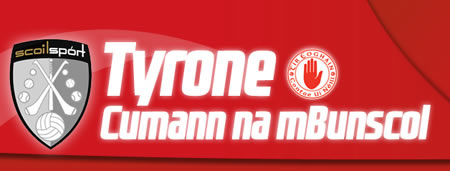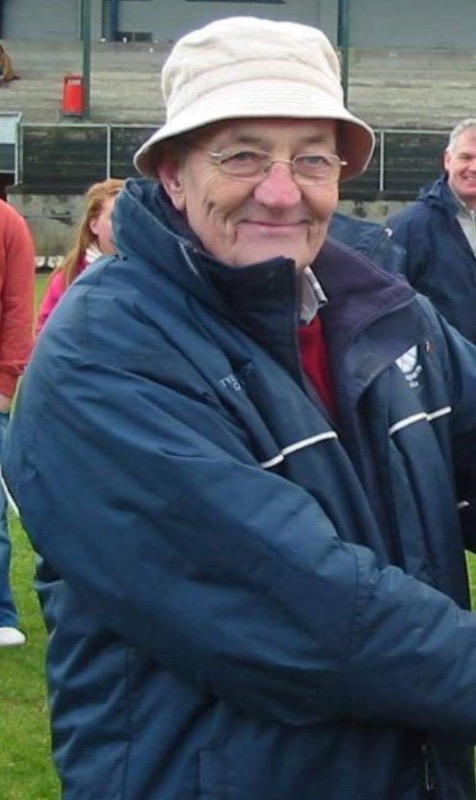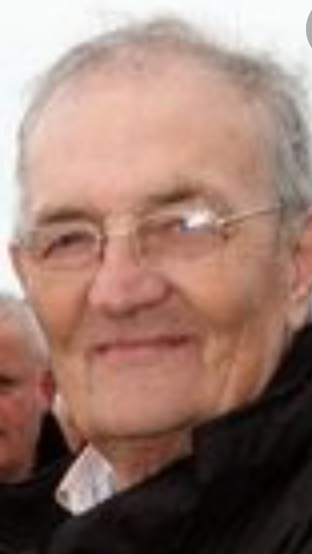- Home
- News
50 years of National Allianz CnmB: Donal Magee
DONAL MAGEE
Donal Magee taught in St Mary’s PS, Killyclogher, from 1969 until his retirement in 1986. He has served on the Tyrone County Board for many years and is currently Cultural officer. Donal is heavily involved in the continued promotion of Scór and also of Irish language in our Primary Schools.
“I came to St. Mary’s PS, Killyclogher, in September 1969 straight from St. Joseph’s Teacher Training College, Belfast. I had come from a GAA background in Irvinestown, Co Fermanagh. Our house would have been a gathering point for our club players after matches.
When I took up a teaching post in St. Mary’s PS in 1969 there was nothing happening in the school as regards PE, whatsoever. I was PE trained so I suppose I was a step ahead of the other teachers as regards games and so on, along with an enthusiasm to get PE going with my class. I started off playing GAA matches in the yard with the boys, but it wasn’t long before I began to contact other teachers in the locality whom I came to know. Tom Flanagan, who was the principal of Tattyreagh PS and whose children attended our school, was one. I had also got to know Colm McCrory who was principal of Culmore PS (now St Conor’s PS, Omagh) and Francis Hughes in Dromore PS. So, between the four of us, we decided that we could organise a Primary schools’ GAA football competition in the area. There was also St Colmcille’s PS in Omagh which was an all-boys Christian Brothers’ school. That created a problem because being a large school it was very difficult for the smaller schools to compete with them. When the league first got underway, they were able to enter as a whole school team and thus were winning quite easily. We got round that problem by allowing them to continue in the competition, but they could only play class teams. So their two P7 classes became an ‘A’ team and a ‘B’ team. It made things much fairer and other schools were then able to compete with them. When that change was made, we then had a variety of winners which helped the whole competition develop over the years.
Going back to Killyclogher PS, I was the sixth teacher there with an enrolment of approximately 150 pupils, split more or less evenly between girls and boys. At that time in the early 70’s it didn’t have a football field to play on. I approached Killyclogher GAA club for jerseys and balls. In return I undertook to promote GAA in the local primary schools in the parish of Cappagh which has four distinct areas – Killyclogher, Knockmoyle, Mountfield and Arvalee. The jerseys we received were blue and gold because they were the colours of Irvinestown GAA club for whom I was still playing at that time! We received a small grant from the Tyrone County Board for administration. Eventually primary school teams from Dromore PS, Tattyreagh PS, Culmore PS, Omagh CBS, Killyclogher PS, Carrickmore PS and Loughmacrory PS - as well as one or two others - were forming the basis of the league. It was to become known as the Boyle Shield.
At a time when teachers’ salaries were not great (I recall my first month’s salary being £50 and 10 shillings) I took a part-time job working in Gerry McAleer’s Pub in Campsie which was run at that time by Eugene Boyle. Coming from a publican background, I knew the trade so I worked there until I got married. Eugene Boyle knew I had an interest in GAA and, having a keen interest himself, provided our league with a Shield to be presented each year. He also supplied medals for many years after. The Shield was first played for in 1971 and lasted for seventeen years. It was a league format divided into two groups and at its peak was competed for by twelve schools. The stronger section competed for the Shield while the weaker section played for the Dromore Cup. A Cup was found in my wife’s parents’ house which was not being used, so we named it the Dromore Cup and used it as a trophy for the weaker section. Three or four-teacher schools like Tattyreagh PS, Mountfield PS and Beragh PS, where Jack Woods taught, would have competed for the Dromore Cup.
A problem at that time was transport because you were always depending on another teacher to help with getting the teams to the different venues to play the games. Games were played after school at that time so teachers would have been giving up their spare time. I remember once being stopped by a police officer on my way to play Carrickmore PS. He counted twelve pupils with me in my Mark 1 Escort! The funny thing about it was, the officer would have been an occasional customer in the pub I worked in, so he just shook his head and let me go on!!!
In the mid-70’s, we also created a competition called the Feis 7s. This was originally planned to cater for the smaller schools who could not field a 15-a-side team. Very quickly this competition became very popular. Soon we had schools from all over the North coming to play in this one-day event which would begin at 1pm and last until 5 or 6 O’ Clock. It was held between Christian Brothers’ Park and St. Patrick’s Park which were beside each other. What evolved out of it were two competitions which guaranteed that every team got at least two games. If you were beaten in the Feis 7s you then competed in the Dromore Cup which had now shifted to a one-day event. At the beginning the matches were refereed by teachers themselves, although Donal Donnelly, who was principal of St Patrick’s Secondary School in Omagh and who would later become Tyrone County manager for a short time, let us have four of his teachers who arrived at 1pm and carried out the refereeing duties for the whole day. Their reward was a good meal in the Royal Arms Hotel in Omagh at the end! One particular year we had an astonishing sixty-four teams competing although most schools had entered two teams.
When we first started the Feis 7s we had to get some suitable goalposts of course. There was a temporary classroom, belonging to Christian Brothers’ Grammar School in St Pat’s Park, which for some reason someone decided to burn! The flooring joists were not too badly damaged however, so myself and Tom Flanagan spent what seemed like hours taking the joists out of the floor, stripping the nails out of them and erecting them as goalposts. These posts meant we could have four games going at the same time across the pitch.
The Feis Cup went on for about 10 years until it stopped altogether in the mid 80’s. Cumann na mBunscol formed in Tyrone in 1986 and the focus of Primary School GAA turned towards it. The Boyle Shield League and the Feis 7s came to an end as the all-county Cumann began to organise leagues across Tyrone.
1986 was also the year of my retirement from teaching. It certainly wasn’t the end of my interest in primary schools’ GAA. I have until this day retained a special interest in Tyrone primary school GAA activities, not only in this area but across Tyrone. I still share fantastic memories with former pupils and players about those brilliant competitions of the 1970s and 1980s. There are wonderful memories of which I am proud to have played a small part in. It’s great to see that all aspects of GAA are alive and well in our Primary schools and will form memories for years to come...”
Donal Magee
Cumann na mBunscol is proudly sponsored by










